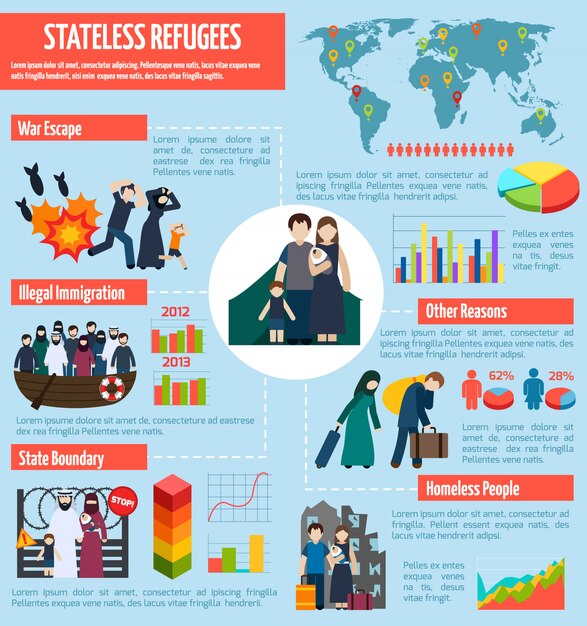Addressing 15% Rise in Hate Crimes: Community Action & Support Guide

The recent 15% rise in reported hate crimes is a concerning trend that underscores the urgent need for robust community engagement and comprehensive support systems to foster resilience and promote inclusivity across society.
The alarming statistic of a 15% rise in reported hate crimes across various communities necessitates a thoughtful and urgent response. Understanding the complexities behind this increase and identifying actionable strategies for both community action and robust support systems is crucial.
Understanding the Landscape of Hate Crimes
Delving into the nature of hate crimes is essential before addressing their increase. These aren’t just assaults or acts of vandalism; they are messages, often intended to terrorize and intimidate entire groups. The motivations are complex, rooted in prejudice against race, religion, sexual orientation, disability, ethnicity, or gender identity.
The reported 15% rise isn’t merely a number; it represents real people and communities impacted by fear and violence. This surge prompts critical questions about societal shifts, political discourse, and the effectiveness of current preventative measures.
Historical Context and Evolving Threats
Hate crimes have a long, painful history, but their manifestations evolve. Today, the digital sphere plays a significant role in radicalization and the dissemination of hateful ideologies, adding a new dimension to an old problem.
- The internet facilitates the rapid spread of misinformation and extremist views.
- Online platforms can serve as recruitment grounds for hate groups.
- Anonymity can embolden perpetrators, making tracking and accountability challenging.
Understanding these contemporary dynamics is vital for developing effective countermeasures. This evolving threat demands an adaptive and multi-faceted approach, moving beyond traditional methods to encompass digital literacy and online vigilance.
Moreover, underreporting remains a significant challenge. Many victims hesitate to come forward due to fear of retaliation, distrust of authorities, or a lack of awareness about reporting mechanisms. This suggests the actual incidence of hate crimes could be even higher, making the 15% reported rise particularly alarming.
To truly grasp the scope of the problem, one must consider both the visible incidents and the vast “dark figure” of crimes that go unrecorded. Community trust in law enforcement and accessible reporting pathways are fundamental to bridging this gap and obtaining a more accurate picture.
The Impact on Communities and Individuals
The ripple effects of hate crimes extend far beyond the immediate victims. They instill fear, erode trust, and can fracture the social fabric of entire communities. For individuals, the psychological and emotional toll can be profound and long-lasting.
Psychological and Emotional Toll
Victims often experience trauma, anxiety, and depression. The realization that they were targeted simply for who they are can be deeply unsettling, leading to feelings of vulnerability and isolation. This psychological burden can impede daily life, affecting work, education, and personal relationships.
- Increased stress and anxiety levels.
- Difficulty sleeping and recurring nightmares.
- Feelings of isolation and alienation from others.
The trauma is not just about the physical act, but the message of hatred behind it. It’s an attack on identity, challenging one’s sense of belonging and safety in their own community. Recovery often requires dedicated psychological support and a safe environment.
Erosion of Community Trust and Cohesion
When hate crimes occur, trust in institutions—like law enforcement or local government—can diminish, especially if the response is perceived as inadequate. This erosion of trust makes collective action more difficult and can deepen existing societal divisions.
Communities, particularly those targeted, may experience increased tension and suspicion. Fear can lead people to withdraw, reducing social interaction and weakening the bonds that hold a community together. This creates fertile ground for further division and intolerance, making it harder to rebuild bridges.
Addressing this requires not just prosecuting offenders but also actively working to restore faith and foster unity. It involves transparent communication, community-led initiatives, and genuine efforts to ensure all residents feel heard, protected, and valued, reinforcing the idea of a shared social responsibility.

Strengthening Community Resilience and Support Networks
In the face of rising hate crimes, building strong, resilient communities is paramount. This involves not only responding to incidents but also proactively nurturing environments where diversity is celebrated, and support networks are readily available. Active community participation is the cornerstone of this effort.
Empowering Vulnerable Groups
Empowering those most at risk means providing them with resources, knowledge, and platforms to advocate for themselves. This includes legal aid, mental health services tailored to trauma, and pathways for reporting incidents safely and confidentially. Education on rights and self-defense can also be beneficial.
Furthermore, fostering leadership within targeted communities ensures that solutions are culturally sensitive and address specific needs. When voices from affected groups are amplified, it builds confidence and creates a sense of agency, transforming victims into advocates for change.
Developing Robust Support Networks
For individuals affected by hate crimes, access to comprehensive support networks is critical. These networks should offer a blend of practical, emotional, and legal assistance. This might involve partnerships between NGOs, law enforcement, and local health services to create a seamless continuum of care.
- Provide immediate crisis intervention and emotional counseling.
- Offer legal guidance and assistance with reporting.
- Connect individuals with long-term mental health support.
These networks must be accessible and culturally competent, ensuring that survivors feel safe and understood. Building trust within these systems is crucial, as is continuous evaluation to ensure their effectiveness in meeting evolving needs.
Building resilience also means investing in educational programs that promote empathy and understanding from a young age. By teaching tolerance and respect, communities can address the roots of prejudice and foster a more inclusive future for everyone. This proactive approach complements reactive measures.
Effective Reporting and Data Collection Mechanisms
Accurate data is the bedrock of effective policymaking. The 15% increase in reported hate crimes highlights the need for robust and reliable reporting mechanisms. Without precise data, it’s challenging to allocate resources, monitor trends, and develop targeted interventions.
Improving Reporting Accessibility and Trust
Many hate crimes go unreported for various reasons, including fear of retaliation, distrust of authorities, or lack of awareness. To counter this, reporting mechanisms must be accessible, victim-centered, and inspire trust. This means offering multiple channels for reporting, including anonymous options.
Law enforcement agencies need to establish clear protocols for identifying and documenting hate crimes, ensuring that officers are adequately trained to recognize the bias motivation. Building strong community-police relations and fostering an environment of trust is also paramount to encourage victims to come forward without hesitation.
Standardizing Data Collection and Analysis
Inconsistent data collection methods across different jurisdictions can hinder a comprehensive understanding of hate crime trends. Standardizing how hate crimes are reported, categorized, and analyzed is essential for creating a national picture of the issue.
- Implement uniform definitions and reporting categories.
- Enhance inter-agency data sharing partnerships.
- Invest in technology for efficient data aggregation and analysis.
Such standardization allows researchers and policymakers to identify patterns, pinpoint high-risk areas, and evaluate the effectiveness of prevention programs. It provides the evidence base needed for targeted interventions and resource allocation, making the fight against hate crimes more data-driven and impactful.
Regular public reporting of hate crime statistics can also increase awareness and accountability. Transparency in data helps galvanize public support for prevention efforts and allows communities to see the tangible impact of their actions. It demonstrates a commitment to addressing the problem seriously.

Legislative and Policy Interventions
Legislation plays a pivotal role in signaling societal values and providing frameworks for justice. Robust laws against hate crimes are essential, but their effectiveness depends on rigorous enforcement and continuous adaptation to emerging threats.
Strengthening Hate Crime Legislation
Many jurisdictions have hate crime laws, but their scope and enforcement vary. Strengthening these laws means ensuring they cover all protected characteristics, imposing meaningful penalties, and preventing loopholes. This sends a clear message that such acts will not be tolerated.
It also involves regularly reviewing and updating legislation to address new forms of hate, such as those propagated online. Laws must be agile enough to respond to the evolving nature of bias-motivated offenses, protecting all vulnerable populations comprehensively and equitably.
Promoting Proactive Policy Measures
Beyond punitive measures, policies should focus on prevention. This includes funding for educational programs that promote diversity and inclusion, initiatives to counter online extremism, and support for community-led anti-hate campaigns. These policies aim to address the root causes of prejudice.
- Allocate resources for educational initiatives on tolerance and respect.
- Develop public awareness campaigns to combat misinformation.
- Support research into the psychological and social drivers of hate.
Effective policy also requires collaboration across government levels, from local municipalities to federal agencies. A coordinated approach ensures that efforts are not fragmented, leading to more comprehensive and impactful interventions that build a more inclusive society at every level.
Furthermore, policies should encourage restorative justice practices where appropriate. This approach emphasizes repairing harm, involving victims and offenders in the process, and potentially fostering understanding and reconciliation. It can complement traditional punitive measures, focusing on healing.
Education and Awareness: Fostering Inclusivity
Education is a powerful tool in combating prejudice and hate. By fostering understanding, challenging stereotypes, and promoting empathy, educational initiatives can help build a more inclusive society from the ground up, preventing hate crimes before they occur.
Curriculum Development and Anti-Bias Training
Integrating anti-bias education into school curricula is crucial. Teaching children about diversity, respect, and critical thinking empowers them to challenge prejudices and recognize discriminatory behavior. This should start early and continue through all levels of education.
Beyond schools, anti-bias training for professionals—including law enforcement, healthcare providers, and educators—can help them recognize and address bias effectively. Such training equips individuals with the tools to respond sensitively and appropriately to incidents of hate.
Public Awareness Campaigns and Media Literacy
Public awareness campaigns can dispel myths, counter hateful narratives, and highlight the devastating impact of hate crimes. These campaigns should be widely disseminated through various media channels to reach diverse audiences.
- Launch multimedia campaigns featuring diverse voices and stories.
- Collaborate with social media platforms to counter online hate.
- Promote media literacy to help individuals critically evaluate information.
Encouraging critical thinking and media literacy can help individuals discern credible information from propaganda, crucial in an age of rampant misinformation. Empowering people to challenge hateful narratives helps create a more discerning and resilient public sphere.
These initiatives aren’t just about preventing hate; they’re about building a culture of inclusivity and mutual respect. When citizens actively participate in learning and advocating for these values, it creates a powerful collective defense against prejudice and discrimination.
The Role of Advocacy and Activism
Advocacy and activism play a vital role in keeping hate crimes in the public consciousness and pushing for systemic change. Grassroots movements, civil rights organizations, and individual advocates often serve as the conscience of society, demanding accountability and justice.
Grassroots Movements and Community Organizing
Local communities are often the first responders to incidents of hate. Grassroots organizations mobilize residents, organize peaceful protests, and provide direct support to victims. Their proximity to the issue allows for targeted and immediate responses.
Community organizing efforts can also lead to the development of local anti-hate initiatives, such as interfaith dialogues, cultural celebration events, and neighborhood watch programs focused on fostering safety and vigilance against prejudice.
Policy Advocacy and Legal Intervention
Advocacy groups work at various levels—from local councils to federal legislatures—to push for stronger hate crime laws, better enforcement, and increased funding for prevention programs. They often leverage data and personal testimonies to illustrate the urgent need for action.
- Lobbying for more comprehensive hate crime legislation.
- Filing lawsuits to challenge discriminatory practices.
- Educating policymakers on the nuances of hate-motivated violence.
Legal intervention by civil rights organizations can also challenge hate groups and individuals, setting precedents that deter future offenses and secure justice for victims. Their efforts often have a broad impact, influencing public opinion and shaping legal frameworks.
Ultimately, advocacy and activism represent the collective voice of those committed to a more just and inclusive society. Their relentless pursuit of equality and safety is a crucial factor in driving progressive change and ensuring that the rising tide of hate is met with unwavering resistance.
| Key Action Area | Brief Description |
|---|---|
| 🤝 Community Engagement | Fostering local unity and support networks for affected individuals and groups. |
| 📊 Data & Reporting | Improving accessibility and consistency of hate crime reporting and data collection. |
| 📚 Education & Policy | Implementing anti-bias education and strengthening legislative frameworks against hate. |
| 🗣️ Advocacy & Support | Empowering victims and advocating for systemic change through collective action. |
Frequently Asked Questions About Addressing Hate Crime Rises
A hate crime is a criminal offense motivated by bias against a protected characteristic, such as race, religion, or sexual orientation. Identifying it is crucial because it recognizes the broader societal harm beyond the immediate victim, providing a clearer picture of prejudice and enabling targeted interventions and support for affected communities.
Individuals can report hate crimes to law enforcement, but also to civil rights organizations. Many organizations offer anonymous reporting options. Documenting details like perpetrator descriptions, precise location, and any evidence (photos, messages) is vital. Trusting support networks and knowing your rights boosts reporting effectiveness and personal safety.
Education is fundamental in preventing hate crime increases by fostering empathy, critical thinking, and respect for diversity from an early age. Anti-bias training in schools and public awareness campaigns help challenge stereotypes and counter misinformation, building a more inclusive society resistant to hatred and prejudice as a long-term solution.
Communities build resilience by strengthening support networks, empowering vulnerable groups, and promoting active engagement. This includes providing psychological and legal support for victims, fostering intergroup dialogue, and organizing anti-hate initiatives that reinforce unity and collective action, demonstrating a strong, unified front against discrimination.
Legislative steps often involve strengthening hate crime laws to include broader protections and tougher penalties. Policymakers are also implementing proactive measures like funding anti-bias education programs and improving data collection. Continuous review ensures laws remain relevant to evolving threats, fostering a more robust legal framework for justice.
A Collective Commitment to Combatting Hate
The 15% rise in reported hate crimes is more than just a statistic; it’s a stark reminder of the persistent challenges faced by numerous communities. Addressing this concerning trend demands a multifaceted approach that transcends mere reactive measures. It calls for a profound commitment to understanding, action, and solidarity from every segment of society. By collectively investing in robust community support systems, fostering trust in reporting mechanisms, enacting stronger legislation, championing inclusive education, and amplifying the voices of advocacy, we can begin to turn the tide. This path requires unwavering dedication to creating environments where diversity is not just tolerated, but celebrated, and where every individual feels safe, respected, and valued. The journey to a more equitable and tolerant society is ongoing, and it is a responsibility we must all share.





